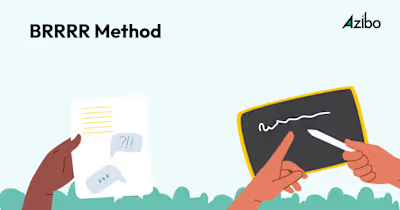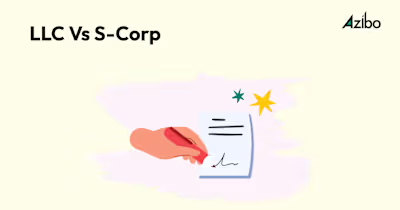What Is Seller Financing and How Does It Work?

Seller financing is when you get a mortgage to buy a home from the home's seller instead of a bank. Let's review the pros and cons for buyers and sellers.
Financing is often the most challenging aspect of buying a home. While most home buyers naturally gravitate toward traditional mortgages, seller financing is also an option. This purchasing strategy, also known as owner financing, simplifies the closing process by allowing buyers to borrow directly from sellers.
In a seller financing arrangement, buyers may benefit from more flexible mortgage programs and terms, reduced closing costs, and potentially, no appraisal or inspection requirements. A 2024 Zillow survey revealed that out of recent successful buyers who secured a low rate, 35% received special financing from the seller or builder. That survey showed nearly half of recent successful buyers were able to secure a rate below 5% — a surprising feat given average 30-year fixed mortgage rates ranged from 6% to almost 8%.
Keep in mind, as with any nontraditional mortgage option, the market often informs the rate and terms you receive. Buyers can face higher interest rates in a seller financing arrangement and large lump-sum payments at the end of their loan terms. You’ll want to consider working with a local buyer’s agent to see if seller financing is worth negotiating.
In this article, we’ll discuss what seller financing is, how it works, and how to get it. We’ll also assess the pros and cons of seller financing to help you decide if it’s the right decision for you.
What is seller financing?
Seller financing is a real estate financing arrangement where the individual selling the property is also the lender. Instead of getting a mortgage through a bank or a non-bank mortgage lender, the buyer obtains financing directly from the owner of the property. Seller financing eliminates the need for financial institutions, making it an attractive alternative for nontraditional borrowers who might not qualify for a traditional mortgage loan. Conversely, sellers can use seller financing to attract buyers in more competitive markets.
How does seller financing work?
Similar to a traditional mortgage, a seller financing arrangement requires the buyer to make an upfront down payment, followed by monthly payments over a designated period — usually 5 to 10 years.
Depending on the payment schedule set by the buyer and seller, the buyer may have to make a large final payment, called a balloon payment, at the end of the loan term. Some buyers obtain a mortgage refinance instead, and pay off the seller with the proceeds from the refinance.
Once the debt is cleared, the seller will either transfer the property title to the buyer or execute a Satisfaction of Mortgage. A Satisfaction of Mortgage indicates the mortgage has been paid off and releases the property lien.
Sellers will run some kind of background and/or credit check, but underwriting requirements are typically less stringent than traditional mortgage financing. Buyers also have the option to waive home inspections and appraisals if they wish, although agents will likely advise against this to make sure the property you’re purchasing doesn’t have any major defects. Tax and insurance payments are made directly to the seller, in addition to monthly payments.
Example:
A homeowner wants to sell their home for $400,000, but their buyer can’t secure the total amount from the bank because they have a low credit score. The seller offers the buyer owner financing to not lose the sale. The buyer agrees to pay a down payment of $50,000. The seller agrees to finance the remaining $350,000 at a 10% interest rate over 10 years, with a balloon payment of $50,000 at the end of the loan term.
Over the course of the loan, the buyer makes monthly principal and interest payments directly to the seller. The buyer is also responsible for timely insurance payments and property taxes. At the end of the loan term, the buyer makes the final balloon payment, and the seller officially transfers the property title to the buyer.
Common types of seller financing agreements
A key advantage of seller financing is the ability to choose the kind of agreement you’d like to have with your lender, a.k.a. the seller. Consider the following types of deal structures.
Promissory note and mortgage deed of trust
One of the most common ways to structure a seller financing deal is to draft a promissory note and mortgage deed of trust. The promissory note details loan terms, such as interest rate, loan amount, and amortization schedule.
The mortgage deed of trust states that the buyer will repay the loan according to the terms outlined in the promissory note, and that the seller will hold the property’s title until the loan is paid in full. This arrangement is also referred to as a holding mortgage.
Land contract
A land contract is a formal agreement between a buyer and a seller, where both parties agree that the buyer will be allowed to purchase real estate without a loan from a lender. Land contracts provide buyers with an equitable title, which grants temporary shared ownership, while allowing the buyer to build equity in the property. Instead of obtaining a title at closing, the buyer gets a deed.
Lease option
A lease option, also known as a rent-to-own arrangement, allows the buyer to lease the property from the seller and later purchase the property at the end of the lease term for a set amount. The rent paid throughout the lease term can be applied toward the purchase price.
Junior mortgage
A junior mortgage is a small mortgage, usually 20% of a home’s total value, used to supplement a buyer’s primary mortgage on a home. Sellers offer junior mortgages when buyers aren’t able to secure the full amount needed to complete a home purchase.
Assumable mortgage
An assumable mortgage allows the buyer to take the seller’s place on an existing mortgage. Almost all mortgage loans are assumable. However, depending on the type of loan, you may be required to meet certain requirements to assume a mortgage. For instance, conventional adjustable-rate mortgages (ARM) are assumable with the original lender’s approval.
Whichever seller financing option you choose, be sure to get it in writing. Sellers aren’t required to abide by the same lending requirements as traditional mortgage lenders.
As a result, buyers don’t have the protections they would normally have with a traditional mortgage. Hiring an experienced real estate attorney to draft a promissory note and review key documents is highly advised.
How to get seller financing
While there are several ways to structure a seller financing deal, obtaining one can be challenging. Here are three steps you can take to increase your chances of a successful deal:
Find a willing and able seller
Not many sellers are willing to take on the role of a lender, usually less than 10%. Reach out to sellers directly or through your real estate agent to find out if they’d be open to an owner financing deal.
Sellers who need to close quickly due to the threat of foreclosure may be more open to the idea than sellers who aren’t concerned with closing timelines, or have multiple offers coming in.
Sellers who own properties with unique characteristics may also be good candidates. These properties are often difficult to appraise, which makes traditional financing more complicated.
Negotiate as many loan terms as possible
Removing the presence of a third party lender allows you to determine the terms of the loan. Try to negotiate as many loan details as possible in your favor. Ask your lawyer or agent to help you negotiate on key items such as purchase price, down payment, interest rate, and repayment schedule.
You may also want to negotiate on monthly payment terms, such as the total number of payments, due dates, and late payment policies. Be sure to clearly state how and when balloon payments, if any, will be made in the promissory note.
Double check property liens
Lastly, you want to be completely sure that the seller owns and has the right to sell the property you’re purchasing. If the seller doesn’t own the property outright, make sure that the original lender is aware of the seller financing deal taking place.
You’ll also want to confirm that no other entity has a claim on the property through a lien, unpaid judgment, or outstanding property taxes. Consider getting title insurance before signing any documents. Title insurance offers legal and financial protection to the buyer, should any title issues arise after a home purchase is finalized.
Why consider seller financing?
Seller financing can be a convenient solution for buyers and sellers who are eager to finalize a home sale or purchase with little to no involvement from third parties. However, there are many factors to consider before entering into this type of arrangement. Be sure to review the risks and benefits of seller financing and carefully assess whether it makes sense for you.
Benefits of seller financing
Buyer advantages
Nontraditional borrowers, such as self-employed individuals and business owners, can access funds they may not be able to obtain otherwise.
There are no set down payment requirements.
Down payments can be negotiated directly with the seller, which is not the case with many traditional mortgages.
The borrowing cost is reduced, because there are less lender-imposed expenses, such as home appraisals, inspections, and associated lending fees.
Seller advantages
Since there are no appraisal or inspection requirements set by the lender, there’s a higher chance of the seller being able to sell the home as is.
Interest rates on owner financing deals are typically between 6 and 10 percent, providing sellers with better returns on a seller financing deal than many other investment opportunities.
Should the buyer default on the loan, the seller will likely keep the home title and any payments made toward the loan.
If the seller ever wants out of the agreement, they could sell the promissory note to another investor in exchange for an upfront payment.
Risks of seller financing
Buyer disadvantages
Seller financing can have higher interest rates than traditional bank loans and government-backed mortgages.
Large lump-sum payments upfront and at closing are common.
The seller determines the buyer’s eligibility, no one else.
Seller disadvantages
Sellers need to initiate the foreclosure process if the buyer defaults.
If the seller provided the buyer with a junior mortgage, their claim comes secondary to the primary mortgage on the home.
In case of foreclosure, the seller is responsible for repairing the house and paying back any outstanding property taxes and insurance claims.
Depending on the size and nature of your seller financing deal, federal law may limit the amount of owner financing that can be provided and require the presence of a mortgage loan originator.
Tips when using seller financing
When choosing seller financing over a traditional mortgage, it’s recommended you work with a real estate agent or lawyer who can provide professional advice to protect your individual interests. Some states may even require you to work with a professional when buying and selling a home. Your real estate agent can often recommend a good attorney, if you don’t already have one.
As the buyer, it’s also critical to know whether you would qualify for bank financing. Since seller financing terms typically require the loan be paid off within 5 to 10 years, a formal pre-approval by a mortgage lender will let you know the loan amount you can comfortably afford. You can use the pre-approval as a comparison against the seller financing terms to help you avoid stretching your budget. See the amount you may be eligible to borrow by starting the pre-approval process with us at Zillow Home Loans*.
*An equal housing lender. NMLS #10287
The information provided in this article is for educational purposes only and is not intended to provide legal, financial, or other professional advice.
Tags
Written by
12.21.2024
How much home can you afford?
At Zillow Home Loans, we can pre-qualify you in as little as 5 minutes, with no impact to your credit score.
Zillow Home Loans, NMLS # 10287. Equal Housing Lender
Related Articles
What Is a Home Inspection Contingency?
What Are Cash Reserves for a Mortgage?
What Is a 30-Year Fixed-Rate Mortgage?
Thinking about buying but not sure where to begin?
Start with our affordability calculator.
Like this project
Posted Mar 24, 2025
Some sellers may offer to finance your home purchase. Learn more about what seller financing is, how it works, and how to get it.
Likes
0
Views
10
Clients

Zillow







